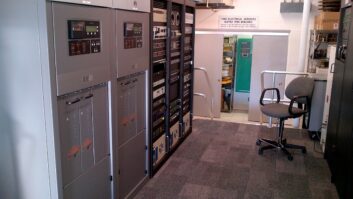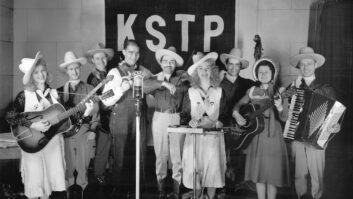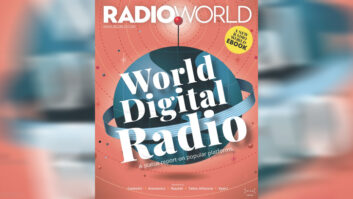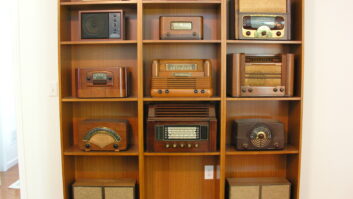Over the past two decades, computers have revolutionized radio broadcasting, changing how content is created, stored and utilized, as well as the technological nuts and bolts of the business.
The next area poised for transformation is advertising.
“Programmatic” has become a buzzword in advertising circles in the past year; and though it is of most interest to the sales department staff, it should be understood, too, by managers in other departments of a media/radio enterprise.

A chart from the Interactive Advertising Bureau (www.iab.net) identifies four discrete types of programmatic transactions. One of the first panel discussions on programmatic trading in radio took place at Radio Show 2014 in Indianapolis. We talked with several industry leaders about the implications of this topic.
IT’S HAPPENING
Programmatic ad buying, in which advertisers can use real-time applications to purchase inventory associated with audience segments and listener attributes, generated $10 billion worth of revenue in the United States. That’s according to Jelli, a programmatic ad platform for the global radio market.
Since the dawn of digital, premium inventory has been sold to clients via direct sales teams with guarantees surrounding placement and positioning. Today, premium inventory also is available through open exchanges and private market places meaning that a site’s home page, or a popular and high-quality section of a website, is also likely available through programmatic.
According to the Interactive Advertising Bureau, there are four types of programmatic trading.
“Automated Guaranteed” works like traditional direct sales, with a fixed price. The difference is that the campaign trafficking is automated.
The second type is “Unreserved Fixed-Rate.” These function in an exchange environment, but have pre-negotiated fixed pricing (CPM, CPC, etc.) These types of deals usually come in at a higher priority than invitation-only or open auctions (see chart). A deal of this type happens because of advertiser demand for a more predictable offering within the exchange space.
“Invitation-Only Auction” refers to an event where the publisher (in this case, the stations) restricts access to select buyers/advertisers via a Whitelist/Blocklist. It is important to note that it is a true auction where buyers will be expected to bid on inventory.
Finally, there is the “Open Auction,” described by the IAB as the Wild West of auctions. A publisher usually will allow all buyers to participate. Typically there is no direct relationship between the buyer and seller. Publishers may use blocklists to limit access. Advertisers may not be aware of what publishers they are buying on.

John Rosso, Triton Digital THE NEXT FRONTIER
Programmatic buying originated when Web publishers used it to sell lower-valued ad inventory. It worked so well it was then used to buy and sell premium inventory. Programmatic trading has now spread to cover advertising in all media, and radio is its next frontier.
Despite all the talk about programmatic, it is making slower inroads outside of the online environment. A poll recently taken by the Association of National Advertisers of 153 client-side marketers indicates that almost 40 percent have low or no awareness of programmatic buying. A little more than half of the respondents have used programmatic buying in the last year. For the brokers and middlemen in the process, however, that is the good news.
“Terrestrial radio is the next big growth opportunity for programmatic trading,” said Jelli CEO Mike Dougherty. He adds that it has some catching up to do on the technology side before it can reap the benefits of automated buying.
“Because they don’t have the ad tech, they have fundamental problems that aren’t issues in the online space, such as ensuring that an ad was delivered properly,” said Dougherty, adding metaphorically: “Of 4 trillion ads run in radio, there are 100 billion and a half mistakes every year that require make-goods to redo the ad properly.” (See related interview in our Jan. 14 issue, “Jelli: Programmatic Is Radio’s Future.”)
Another issue of terrestrial radio addressed by programmatic is proof of performance. Advertisers usually don’t know if, or how much, a radio spot has impacted purchasing decisions until the next quarter, when they can match it with sales and conversion data.
A programmatic platform addresses both of these problems through ad delivery and real-time reporting. The ad serving hardware is located at each affiliated station and tied into the station’s automation and traffic systems. “After our gear is connected, that station lights up on our platform as being available to run ads,” said Dougherty.
When a station goes into a commercial break, the ad server takes over, running whatever spots are on the log. The spots originate on the platform’s cloud-based application.
“Currently, radio generates about $16 billion of revenue,” said Dougherty, “but zero percent of that is from programmatic trading. Our job is to bring radio into the equation.” He adds that the current numbers and projections for programmatic trading in radio are very positive. “In 2014, $10 billion has been spent in the U.S. on programmatics, although all of it is outside of the radio industry. That’s an increase of 130 percent over 2013. The growth in the next 20 months is expected to be between $10 and 20 billion.”
According to Dougherty, media buyers like to purchase a holistic media mix of digital channels. As it stands now, terrestrial radio must be purchased separately, meaning it is losing advertising dollars.
With programmatic, the playing field is leveled for terrestrial radio. Buyers can look at real-time data and match activity to sales on a dashboard, making it much easier to target audience segments, as well as more flexible than traditional methods of buying radio time.
CHANGE IS INEVITABLE
As programmatic advertising becomes more integrated into terrestrial broadcasting, some changes can be expected in how the station’s sales department works.
“The numbers of sales people probably won’t change much,” said Dougherty. “What will change is how they spend their time. A programmatic ad platform working with a station’s automation and traffic systems pretty well takes care of the ‘back end’ of placing and tracking ads. That will give sales people more time to focus on selling.” He adds that programmatic trading may also result in a higher percentage of national ads running on stations, as well as more ads overall, since unsold spots may become a thing of the past.
Even the definition of the term “programmatic” has expanded from its original description of a one-to-one relationship where a targeted ad is delivered to a Web browser; and programmatic advertising with streaming and terrestrial radio work differently.
“Over the past two years, the term has been co-opted to mean supply-side automation, meaning that anyone in the supply chain can integrate to the rest of the chain,” said John Rosso, president of market development for Triton Digital. “And that’s how programmatic works with terrestrial radio.” He adds that streaming media are different in that they provide the ability to target ads to specific listeners.
A programmatic ad platform for streaming media, for example, enables real-time bidding and programmatic buying of targeted online and mobile audio inventory for advertisers, which enhances the ability to manage, buy and sell third-party advertising campaigns. The platform’s automated, exchange-driven method of buying and selling ad impressions facilitates rapid and precise transactions, eliminating waste and resulting in the highest price for publishers and the greatest efficiency for advertisers.

RadioDash provides stations, networks and advertisers with detailed insights for ad campaigns in real time, as well as instant validation of spots running on broadcast radio via a dashboard. Source: Jelli “Programmatic trading enables us to close the gap between audio and other digital media types,” said Rosso. “Right now, there are a number of people with digital ad budgets who are not buying radio.”
Some of the buzz about programmatic emphasizes the globalization of advertising, but as Rosso sees it, that’s a bit of a misconception.
“Some people believe that there’s a pool of global advertising dollars that they can tap into with programmatic, and that’s not true. Ad campaigns are always localized to target regions and cultures. What will happen is that someone listening to the stream of a Turkish radio station while in New York City, for example, may soon hear commercials for New York businesses, rather than the Turkish ads that are playing on that stream locally.”
Rosso concludes that this is a trend that cannot be ignored. “Programmatic is the fastest-growing segment of advertising globally, and most digital media run on programmatic.”
While programmatic brings a larger pool of advertising dollars to radio, there are some who wonder if it might have a detrimental effect on the price per ad.
Jeff Haley, CEO of Marketron, elaborated: “There is justifiable concern within the radio industry that introducing automated buying technology could lead to ‘cost per mille’ declines as broadcasters seek to cut the price on unsold inventory. These price declines have occurred on the Web with the advent of programmatic. However, inventory is finite, and controls can be more disciplined.
“I believe that if the right platform and right information is maintained, radio should see new revenue streams from this improved information flow.”
He adds that so far, 1,500 stations have signed a letter of intent to come on board with Marketron. The beta of its new system for programmatic trading was set to roll out after Jan. 1 of this year and should be fully operational by the second quarter.
On the station side, the outlook seems to range between pragmatism and resignation. Since the landscape is still in a state of flux, many groups were unwilling to speak on the record to RW.
“We can no longer ignore what is coming,” said Saga CEO Ed Christian, discussing programmatic trading in a recent post on Facebook by brokerage/consultancy Seeger Media. “We will need to find ways to work in both worlds, and to possess the tools to work on a level playing field.”
The most troubling aspect of programmatic for the Saga CEO seems to be the “unreserved fixed-rate open auction,” where buyers and sellers have no direct contact, and the advertisers may not even know what stations they are buying. One of the ways that stations can protect themselves with open auction is to blacklist certain advertisers from participating.
The plan at Saga is to maintain the “core competencies in broadcast sales” and graft programmatic on to it. The question of whether to release both the restricted and non-restricted inventory from the Saga stations remains unanswered, according to a post on Seeger Media’s Facebook page.
Comment on this or any story. Write toradioworld@nbmedia.com.







